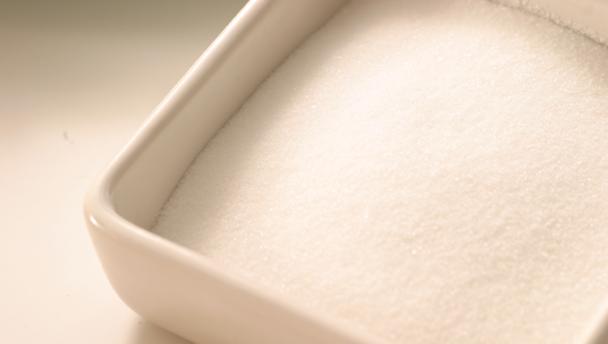

Normally refined white sugar, with medium-sized grains (measuring 0.5mm), this is the most common form of sugar. It is the everyday sugar of Europe and North America, to be used when a recipe does not specify another type. Granulated sugar is obtained from sugar cane or sugar beet. It is produced by allowing raw sugar to crystallise, treating it with chemicals, filtering it several times, and then drying it to prevent it from clumping.
 Red-cooked pork belly
Red-cooked pork belly
 Bengali butternut squash with chickpeas
Bengali butternut squash with chickpeas
 Malaysian-spiced noodles with tofu
Malaysian-spiced noodles with tofu
 Salt-crusted sea bass with runner bean salad
Salt-crusted sea bass with runner bean salad
 Vietnamese-style crayfish and noodle salad
Vietnamese-style crayfish and noodle salad
 Mexican sweetcorn pancakes, poached eggs and salsa
Mexican sweetcorn pancakes, poached eggs and salsa
 Celeriac remoulade
Celeriac remoulade
 Mixed bean salad
Mixed bean salad
 Christmas carrots
Christmas carrots
 Sautéed caramelised fennel
Sautéed caramelised fennel
 Rhubarb fool with lemongrass
Rhubarb fool with lemongrass
 Easy sticky toffee pudding with toffee sauce
Easy sticky toffee pudding with toffee sauce
 Blood orange tart
Blood orange tart
 Rhubarb pie
Rhubarb pie
 Cappuccino profiteroles
Cappuccino profiteroles
 How to make shortbread
How to make shortbread
 Ginger, pecan and rum chocolate brownies
Ginger, pecan and rum chocolate brownies
 Lemon drizzle traybake
Lemon drizzle traybake
 Lemon and thyme cake
Lemon and thyme cake
 Mango smoothie
Mango smoothie
 Earl Grey martini
Earl Grey martini
 The ultimate masala tea
The ultimate masala tea
 Piccalilli
Piccalilli
 How to make chutney
How to make chutney
 Onion marmalade
Onion marmalade
Granulated sugar is also available in coarse-grained (called sugar nibs or nibbed sugar) and fine, sieved varieties. A light-golden, raw form of granulated sugar that is only lightly processed is also available and gives a more complex and rounded flavour to dishes.
Keep in a cool, dry cupboard away from heat or moisture to ensure that the grains remain separated.
Use granulated sugar in hot drinks, cereals, baking, jams and marmalades. Sift before use to remove any clumps.
Article by Sejal Sukhadwala
Type the ingredients you want to use, then click Go. For better results you can use quotation marks around phrases (e.g. "chicken breast"). Alternatively you can search by chef, programme, cuisine, diet, or dish (e.g. Lasagne).